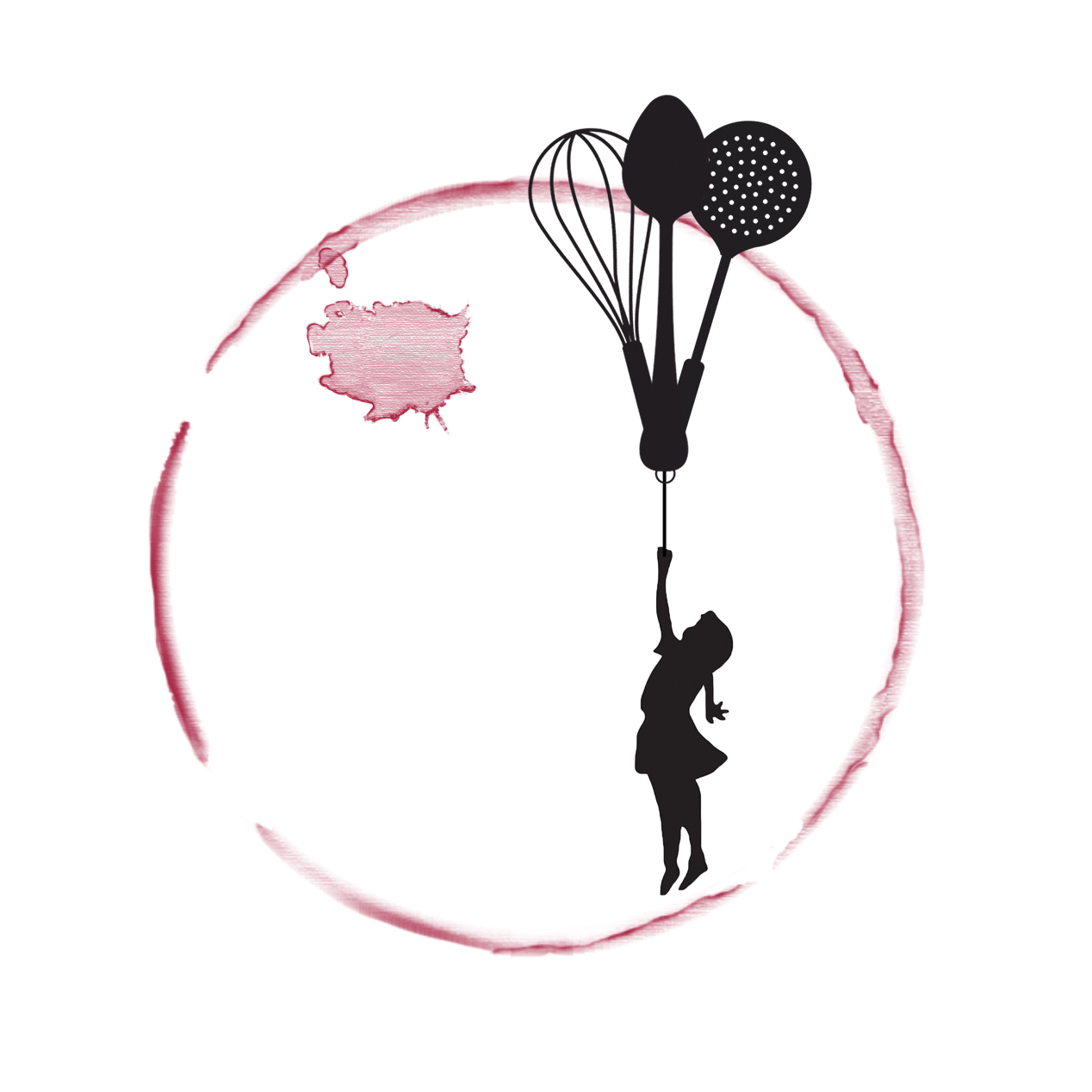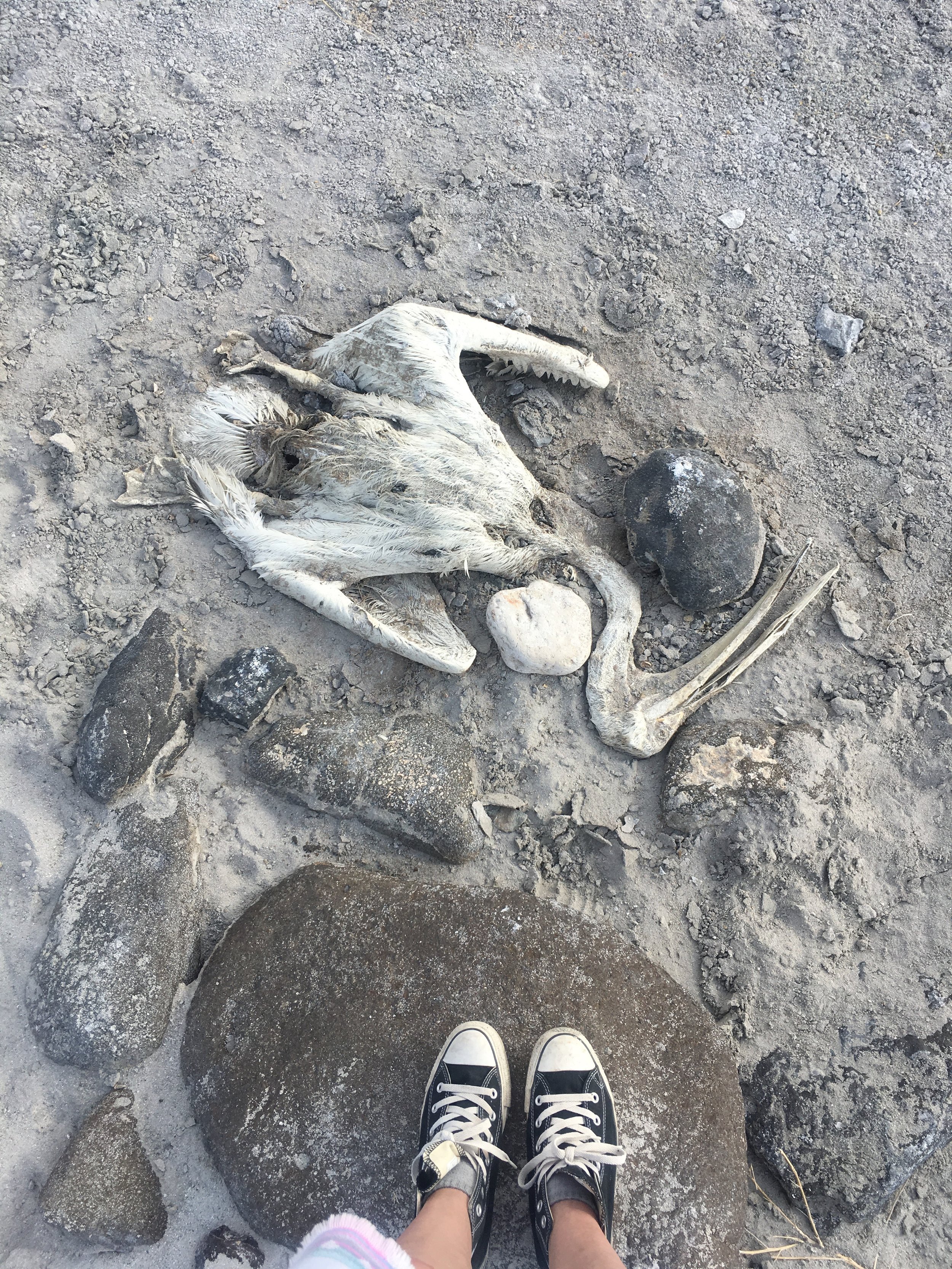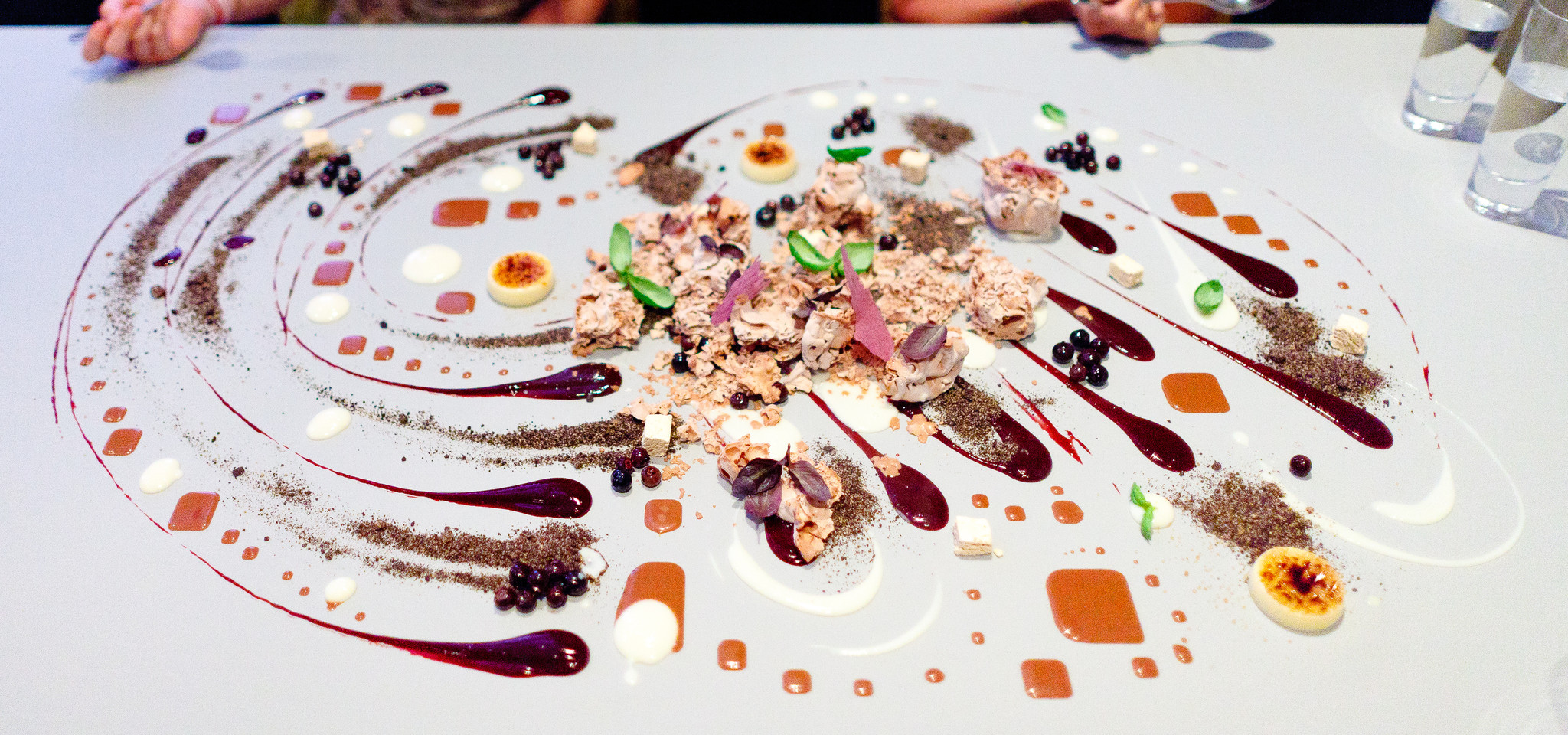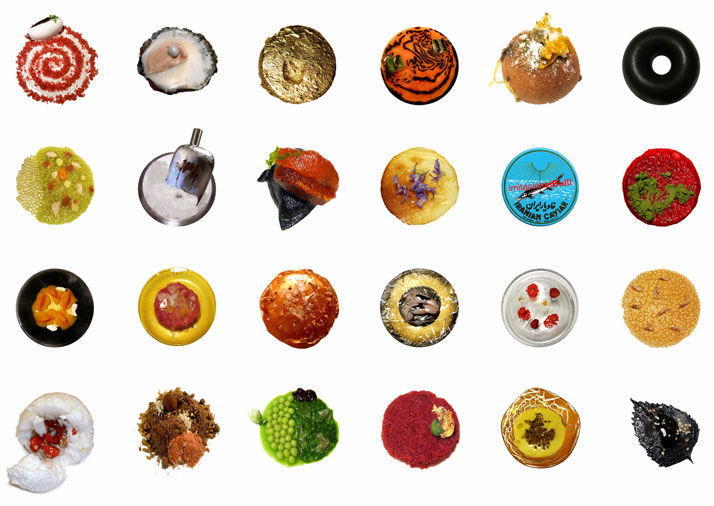The Adventure Pt.4 - Aufhebung
It's a little ironic that after my post about accountability, I decided to take a week hiatus and post on Tuesday instead of Monday. The transition from languidly driving around the country to becoming part of the opening team of a restaurant is admittedly pretty challenging. I'm learning that renovating and opening a restaurant is several short sprints in a long marathon. We have days that we can't accomplish anything and other days where it doesn't seem like the hands of the clock will slow down.
In my first post, I discussed the three principles that I learned in my travels.
1. Fear and pride are the criminals of failed success.
2. We're responsible for our own accountability.
3. Aufhebung - a German word for wa/onderers.
The meaning of aufhebung came into my thoughts dozens of times during my long days of driving. It's a word that has many contradictory meanings. To simply explain it's translation and my interpretation of it's meaning:
Something is preserved, Something is negated,
Something is transcended.
German philosopher, Georg Wilhelm Friedrich Hegel, often used this term to discuss thesis and antithesis that interact. To further explain, an idea or a concept can be preserved as well as changed for further advancement. Being and Nothing can both exist as Becoming. Other philosophers argue that it means to literally "pick up" and therefore has no philosophical presence.
To further increase the complexity and various meanings of aufhebung, a British Marxist journal was published in 1992 under the name Aufheben with the aim to overthrow the capitalist society after the fall of the Eastern Bloc. Essentially, communists were using a word once meant to question existence and non-existence as the title for their magazine to call the proletarians to action. They still publish an annual magazine and they're still working on figuring out how to make the whole communism thing work out.
What blows me away is that a single word constructed from nine letters can carry such vastly different weights to individuals. It provides me with comfort. It is comforting that a single word can have so much complexity and be the basis of publications of philosophy questioning consciousness and the meaning of nothing.
Dawn's Wedding Feast
This concept first came to when reading "The Sculpture of Louise Nevelson: Constructing a Legend". She famously sculpted with found objects that had been spray painted the same color. For a long time, she worked in white. When she was ready, she switched her palette to black. Her intention was to take ordinary objects and force them to operate on a new level. Her sculptures would fill entire rooms and create a feeling of everything and also nothing. I would check out her book from the library over and over again to preen over the pictures. There was something powerful and energetic about her sculptures. I was tasked with creating a self-portrait sculpture for one of my art classes in college and immediately knew I would mimic Nevelson's work. I pieced together found objects exactly the same height as myself. Objects that meant something incredible to me and also objects that meant nothing to me. Affixed in the center was a box with a clasp. When you opened it, deep gold greeted you against an entirely black sculpture. This was my heart and it was alive. I'll never forget the day my sculpture gave out after being shuffled around from the classroom to a gallery to my apartment over the course of months. It finally collapsed just like the the division of Europe only months after Nevelson's death. As she slipped away and the Berlin Wall fell, I was being rocked in my mother's arms conceived while the Cold War still carried on. Something is preserved, something is negated, something is transcended.
I'm not a feminist.
I'm an artist who happens to be a woman.
Nevelson made me feel courageous. She made me feel powerful. She gave me the strength to be myself and she forced me to think about what nothing is and what everything is and how can we possibly transcend that in our minds? Her dark eyes were captivating and I was often drawn to the comforts of the nothing that were her sculptures.
But what does this have to do with my adventure?
I was in Utah. It was hot, not like the Mojave dessert but dry, dusty and red. My plans for the day were to visit Golden Spike National Historic Site and then make the hour drive out of cell service to what is known as the Spiral Jetty. I first saw a picture of the land art created by Robert Smithson in 1970 at the Dia:Beacon museum in New York. It was moving. It was so moving that simply googling it just now to fact check my words for you brought hot, fiery tears to my eyes. What unfolded that day was powerful, beautiful and life-changing. What happened that day helped me understand what these complex thesis meant to me.
The road from nowhere to nothing.
Visitors of Spiral Jetty are aware of the slim chance that they may even get to see the piece. As mentioned, Robert Smithson produced the 7,000 ton land art made of basalt rock jutting from Rozel Point into the Great Salt Lake in 1970. When Smithson finished the project, it was soon submerged under the 27% salinity water. He knew it would and he wanted it to slip away from the human eye. In 1973, Smithson died in a helicopter crash, the spiral still submerged under the red-hued water. Massive salt crystals formed and left a striking silhouette of the jetty in the water. Soon it submerged further and any evidence of it's existence became invisible to the human eye. The 1,500 foot long counter-clockwise spiral was given to the Dia Art Foundation in 1999 by Nancy Holt, Smithson's wife, while it was still submerged. In 2005, thirty five years after Smithson produced Spiral Jetty, it reemerged for more than just a brief appearance for the first time since it's creation.
My adventure that day started at Golden Spike National Historic Site as many wanderers also do on their way out to the jetty. This is the very place where East met West in America as the Central Pacific and Union Pacific Railroad companies connected a country-wide track. Chinese and Irish immigrants worked endlessly from either side of the country to create the first ever transcontinental railroad. Not one mile of parallel railroad was laid. Somehow, in 1869, these brilliant engineers masterminded how to perfectly connect two railroads spanning our country. The energy of this place is incredible. As a human, it makes you feel unstoppable. It gives you an appreciation for human ingenuity. I especially felt moved by the site after having had spent a week at the SkillsUSA conference surrounded by thousands of brilliant tradespeople that make, move, build and create our world. Now I was standing at a site where men slaved to complete a task that had never before been completed. I filled my water jugs and checked my tires. I knew what was ahead of me and I knew that my cell phone would become useless. I was buzzing with emotion, excitement and thrill.
But just like everyone who visits Spiral Jetty, you have no idea if you'll make it there. The roads are dangerous and graded. If there is rainfall in the least, areas of the road can be completely wiped out. Google Maps tells you 30 minutes but it's the better part of an hour scaling through white gravel roads encrusted with salt. I was blasting down the roads on the straightaways with the windows open watching the salty dust kick up behind my car. I licked my lips and could taste the lake. I stopped for a few photos but was excited to get out onto the impossibly odd body of water. I had waited for this moment for years since first seeing that framed photo in New York.
Even if the roads are perfect in condition, you may get out there to find that the heavy snowfall has risen the water level and submerged the jetty. But you keep believing. You keep telling yourself to accept the jetty you'll see. I came around the last corner and saw the small dirt parking lot. A hillside went almost straight up from the lot and I whipped my car into a spot and jumped out of the car. I looked over the bluff into the Great Salt Lake.
There it was. Marooned. The vast spiral of black basalt rocks completely emerged from the lake. Flats of salt and perfectly cured pelicans. The jetty was there and the water was not. I felt tears some to my eyes. The saltiest tears I had ever felt. I returned to my car and packed a backpack with water, a beer, and my journal. I changed into dirty shorts and a free tee shirt; I shoved sneakers on my feet. I marched up the hillside and planted myself on a rock. I blamed Mother Earth, I blamed change, I blamed the climate, I blamed the timing, I blamed myself, I blamed pollution. And then I realized what I had told myself during my manic drive out to the site. I had to accept the jetty for what I found it as. I stopped blaming and I looked at it again.
Note the cars in the lot for size.
It was so beautiful.
I felt inspired. I felt like it was preserved in the salt. I felt like it was nothing made from earth. I felt transcended in my thought. I had advanced past blame and moved to accepting and loving what I saw. I felt aufhebung for the first time in my life. A concept I had read about and tried to understand but never truly felt. I felt it here. I learned in that moment that life isn't perfect. We can't have exactly what we want. But we can live with the satisfaction of the moments, the people, and the places we're given. Something is preserved, something is negated, something is transcended.
Something is literally preserved.
I drank my beer and I reflected on how powerful the energy of this art felt to me. Eventually, I wandered down to the jetty and walked the 1,500 foot counter-clockwise spiral all the way to the tip. I picked up the salt and I tasted it. I walked back exactly the way I came though the crusted flats surrounding it would have easily let me take a shortcut. With each step I reflected on my journey thus far and how easily I could have left this place disappointed, disgruntled and angry. When I reached my car, I took out my familiar camp chair and wrote a few postcards. As the sun began to sink in the sky over the red Great Salt Lake, I got back into my vehicle and drove away on the bumpy and unpredictable roads. You can drive across country and back a thousand times but it will never change your life unless your willing to let it be changed.
From the right angle... it's nothing at all.
















































